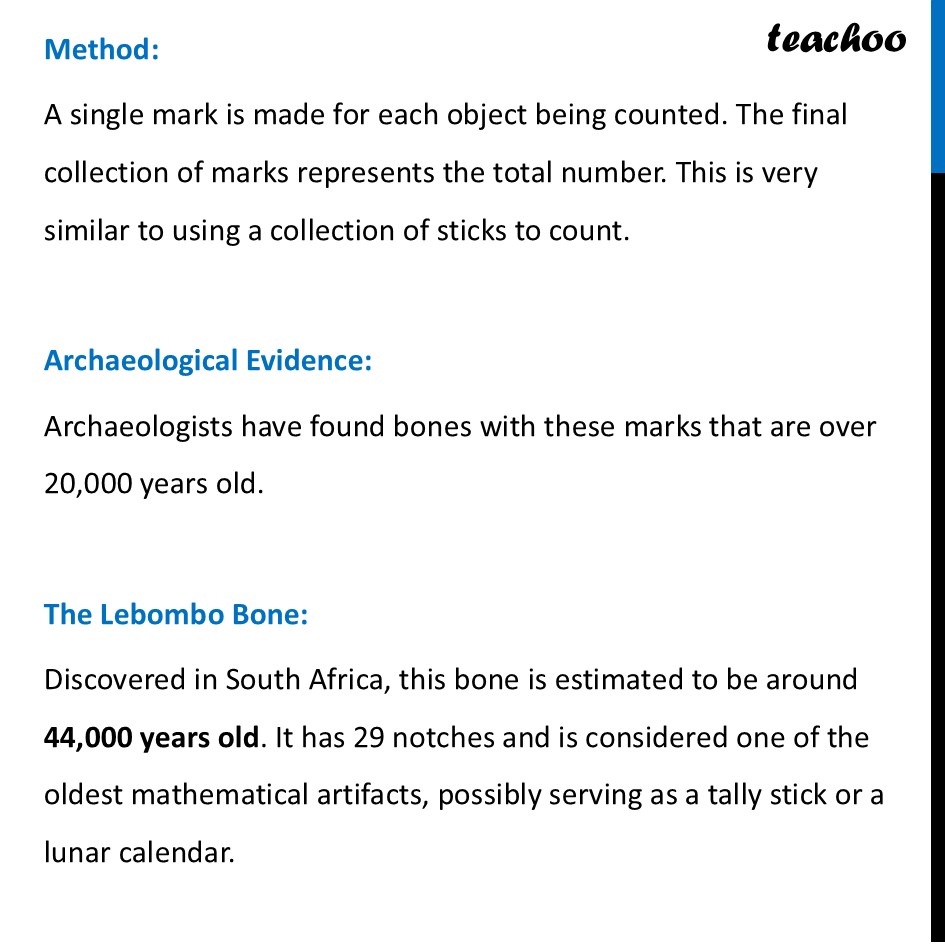![Tally Marks on Bones and other Surfaces [with Examples] - Class 8 - Some Early Number Systems](https://cdn.teachoo.com/537848cc-0bdf-465f-9ad6-3e4e3626af57/slide42.jpg)


Some Early Number Systems
Last updated at November 19, 2025 by Teachoo
![Tally Marks on Bones and other Surfaces [with Examples] - Class 8 - Some Early Number Systems](https://cdn.teachoo.com/537848cc-0bdf-465f-9ad6-3e4e3626af57/slide42.jpg)


Transcript
Tally Marks on Bones and Other SurfacesOne of the oldest methods of number representation is by making notches — marks cut on a surface such as a bone or a wall of a cave. These marks are also called tally marks. Example: Method: A single mark is made for each object being counted. The final collection of marks represents the total number. This is very similar to using a collection of sticks to count. Archaeological Evidence: Archaeologists have found bones with these marks that are over 20,000 years old. The Lebombo Bone: Discovered in South Africa, this bone is estimated to be around 44,000 years old. It has 29 notches and is considered one of the oldest mathematical artifacts, possibly serving as a tally stick or a lunar calendar. The Ishango Bone: Discovered in the Democratic Republic of Congo, this bone dates back 20,000 to 35,000 years. It features columns of notches, which may indicate it was used for a calendrical system. A More Efficient Idea: Counting in Groups A simple tally system (one mark for one object) becomes inefficient for large numbers. The next major step in the evolution of number systems was the idea of grouping.